Three Elements of a Winning Campaign
Advocacy leaders have to wear lots of hats. Those hats require lots of digital support tools like online email petition software and lobbying tools. Social media software for advocacy campaigns.
No wonder the advocacy thing can feel overwhelming. The hat trick for winning advocacy campaigns to promote policy involves three elements:
- An integrated advocacy approach that connects policymakers to policy solutions supported by organization members.
- Knowledge of social media and online digital tools to make connections.
- The push and pull of advocacy communication.
You know your members by their professions, jobs, locations, passions, mission, interests, age, gender, pain points, and joy points. An integrated advocacy approach puts that knowledge to work.
Social media platforms
Social media platforms allow you to communicate to your members through all the dimensions. These tools PULL people into your message. These applications are self-service. There’s a long list: Facebook, Twitter, Pinterest, Instagram, Tinder, Linked In, YouTube, Tumblr, etc. People go to these sites to get their news, follow their interests, or socialize. They rely on your members to go somewhere to get the messages.
According to the Pew Research Center, 76 percent of Americans use social media. Young people use social media the most at 90 percent. Up to 35 percent of adults 65 and older use social media. Gender differences are modest with 68 percent of women and 62 percent of men using the platforms. Urban and suburban people use social media at 64 percent and 68 percent and rural residents use the tools at 58 percent.
The advocacy limit to social media for organizations that support industry, professions, and non profits is thus: according to Pew, only 4 percent of people say these platforms are important to their WORK.
Online email advocacy software
Online email advocacy software and other online tools such as texting are direct communicators to your members. They PUSH your message out by email, text, voice mail, etc. You have control of when the message goes out, to whom it goes, when it arrives, how it looks, etc. You can immediately bring your members into the loop when advocacy needs pop up at any level: federal, state, local.
According to Pew, for workers using the internet, 61 percent say email is “very important,” and this has held true despite the PULL technology currently available. Office-based workers find email “very important” at 3 times the rate of non-office workers. Note that when Facebook or Linked In want to make sure that “friends” get a message, they push those communications out to email accounts.
As the wearer of many hats, what to make of this information? Push and pull online technologies serve different purposes. The PULL technology, when visual, emotional, powerful, can draw people in and get easily shared. You can build your message over time and reinforce it consistently.
The PUSH technology grabs attention and conveys urgency and immediacy. When you push out a Call to Action to your members via email or text, you’re asking them to drop what they’re doing and ACT.
